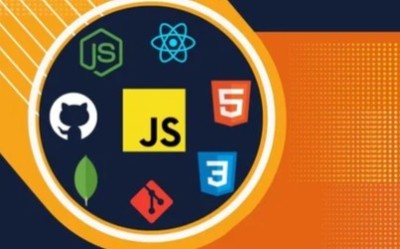Highlights:- Introduction to React: Understand the core concepts of React and how it enhances modern webdevelopment. - Component-Based Architecture: Learn how to build UI components and manage compone...
Highlights:
- Introduction to React: Understand the core concepts of React and how it enhances modern webdevelopment. - Component-Based Architecture: Learn how to build UI components and manage component statesand properties. - React Hooks: Understand and utilize React Hooks for managing state and side effects in functioncomponents. - React Router: Implement client-side routing for single-page applications (SPA). - State Management: Master techniques for handling application state with Context API and Redux. - Component Lifecycle: Learn about component lifecycle methods and how to handle side effects. - Optimizing React Apps: Improve the performance and scalability of your React applications. - Testing React Applications: Learn how to test React components using Jest and React Testing Library. - Advanced React Patterns: Dive into advanced React patterns, including higher-order components
and render props.
Course Objective:
By the end of this course, you will be able to: - Build interactive and responsive user interfaces with React. - Use React Hooks to manage component state and lifecycle events. - Implement routing in React using React Router for a seamless user experience. - Manage and optimize application state using Context API and Redux. - Write tests for your React components to ensure application stability. - Understand and implement advanced React concepts and patterns for better app structure andperformance. - Optimize React applications for better performance and scalability.
Course Structure:
1. Introduction to React
- What is React? Key concepts and the advantages of using React for web development. - How React works: The virtual DOM and reconciliation process. - Setting up a React environment: Create React App, Node.js, npm, and JSX. - Understanding the React ecosystem: React Developer Tools, Babel, Webpack. - Building your first React application: A simple “Hello World” example.
2. React Components and JSX
- Introduction to React components: Functional vs. Class components. - Understanding JSX: How JSX works and how it translates to JavaScript. - Props: Passing data to components through props. - Children in React: How to manage children components and dynamic content. - Handling events in React: Using event handlers like onClick, onSubmit, etc. - Conditional rendering: How to display content based on conditions.
3. State Management in React
- Understanding React state: The concept of state and how it differs from props. - Using the `useState` Hook for managing local component state in functional components. - Handling forms and user input: Using controlled components for form inputs. - Lifting state up: How to pass state between components and manage shared state. - The Context API: Managing global state for small to medium-sized applications.
4. React Hooks
- Introduction to React Hooks: Why and how Hooks replace lifecycle methods in functional
components. - The `useEffect` Hook: Handling side effects such as data fetching and subscriptions. - The `useContext` Hook: Simplifying state management with context. - The `useReducer` Hook: Managing complex state logic with reducers. - Custom Hooks: Creating reusable hooks for modular and cleaner code. - Best practices for using Hooks in React applications
5. React Router
- Introduction to React Router: Routing in single-page applications (SPA). - Setting up React Router and understanding its core components: `Route`, `Switch`, and `Link`. - Dynamic routing: Using route parameters and query strings. - Nested routing: How to organize routes within parent-child structures. - Redirecting users: Implementing navigation and programmatic routing. - Protecting routes: Managing private routes and user authentication flows.
6. State Management with Redux
- Introduction to Redux: Centralized state management in React applications. - Understanding Redux architecture: Actions, reducers, and the store. - Using Redux with React: Connecting components to the Redux store using `connect` and
`useSelector`. - Dispatching actions and updating state in the Redux store. - Middleware in Redux: Using middleware like Redux Thunk for async actions. - Advanced Redux patterns: Normalizing state and utilizing selectors.
7. Component Lifecycle and Side Effects
- Understanding the React component lifecycle: Mounting, updating, and unmounting. - Class components vs. functional components lifecycle methods. - Using the `useEffect` Hook to replicate lifecycle methods like `componentDidMount`, `componentDidUpdate`, and `componentWillUnmount`. - Handling asynchronous operations in React, such as fetching data from an API. - Optimizing side effects: Cleaning up side effects with `useEffect`
8. Performance Optimization in React
- React re-rendering: Understanding when and why React re-renders components. - Memoization: Using `React.memo` to prevent unnecessary re-renders of functional components. - The `useMemo` and `useCallback` Hooks: Optimizing expensive computations and callback
functions. - Lazy loading components with `React.lazy` and `Suspense` for code splitting. - Virtualization techniques: Using libraries like React Virtualized for rendering large lists efficiently.
9. Testing React Applications
- Introduction to testing in React: The importance of testing and the tools available. - Setting up Jest and React Testing Library for testing React components. - Writing unit tests for functional and class components. - Mocking API calls and asynchronous data fetching in tests. - Testing component behavior and user interactions with `fireEvent`. - End-to-end testing with tools like Cypress.
10. Advanced React Patterns
- Higher-order components (HOC): Enhancing component functionality with HOCs. - Render props: Sharing logic between components through render props.
- Controlled and uncontrolled components: Managing form inputs and handling DOMelements. - Context for dependency injection: Managing cross-cutting concerns like themes and
authentication.
11. Capstone Project: Building a React Application
- Building a full-fledged React application from scratch. - Incorporating React Router for navigation, Redux for state management, and Axios for data
fetching. - Implementing authentication and authorization flows using JWT. - Writing tests to ensure the app’s functionality is correct and robust. - Optimizing the app for performance and scalability. - Deploying the application to a cloud platform like Netlify or Vercel.
Learning Methodology:
- Interactive Lessons: Engage in hands-on tutorials, coding exercises, and real-world case studies tolearn React concepts. - Project-Based Learning: Apply the learned skills by building full-scale React applications throughout
the course. - Assessments and Quizzes: Reinforce learning through quizzes, assignments, and project
assessments. - Live Sessions: Participate in live coding sessions, Q&A, and troubleshooting with instructors. - Discussion Forums: Collaborate with peers, ask questions, and discuss solutions in dedicatedforums.
Who Should Enroll:
- Beginners: Individuals who are new to web development and want to start with React as a frontendframework. - Frontend Developers: Developers familiar with HTML, CSS, and JavaScript looking to expandtheir
skills in modern web development.
- JavaScript Developers: Developers who want to build dynamic user interfaces with React. - Full Stack Developers: Developers who want to specialize in React as part of their full-stack
development skills. - Students: Students in computer science, web development, or software engineering looking togainpractical experience in frontend development. This React Development course will provide you with the skills needed to build modern, dynamic, and interactive web applications. Whether you're aiming to transition into frontend development or
want to master React, this course will give you the practical knowledge and experience necessarytosucceed in building scalable and high-performance React applications.













